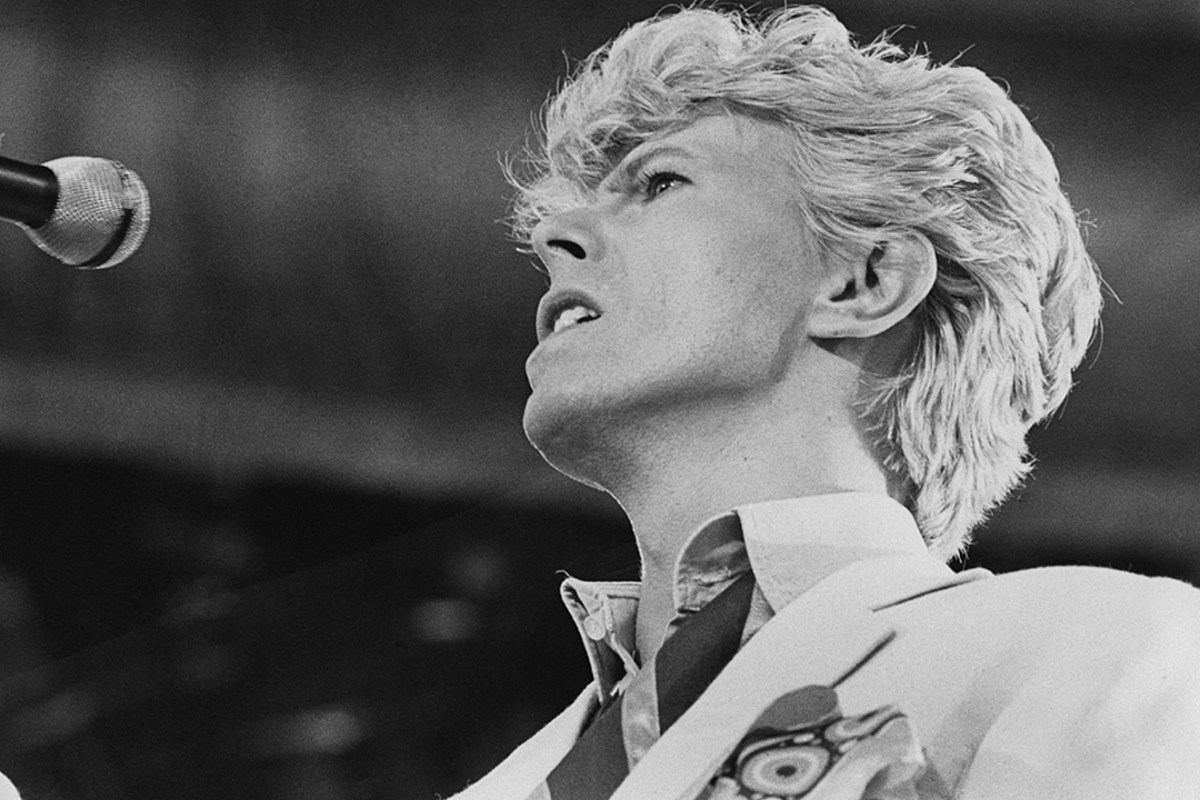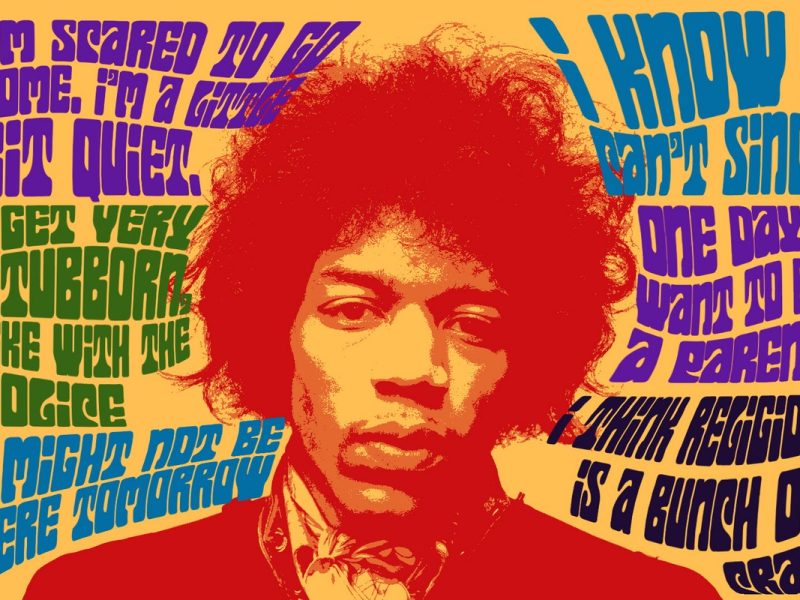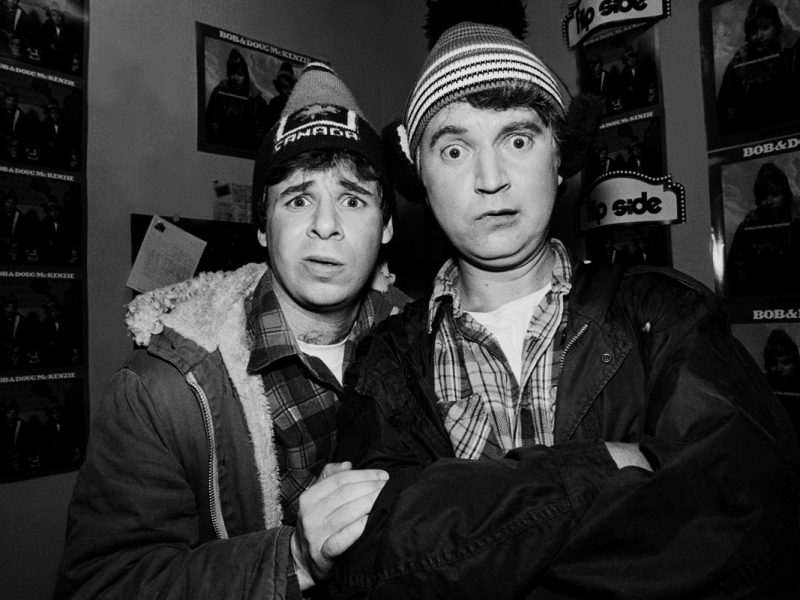David Bowie was in the mood to try something different as the early ’80s unfolded.
He’d been listening to R&B and blues records while on vacation in the South Pacific from the likes of James Brown and Albert King, and that ended up forging his next musical path.
“I asked myself, ‘Why have I chosen this music?'” Bowie later mused. “It was very non-uptight music, and it comes from a sense of pleasure and happiness. There is enthusiasm and optimism on those recordings.”
In other words, something a world away from the Berlin Trilogy. Then he met Chic legend Nile Rodgers at a New York nightclub. They hit it off, and Bowie shared a few of his demos, including a folky number that would become the title track for his next LP.
Unfortunately, Rodgers was unimpressed. “I come from dance music,” he remembered telling Bowie. “You can’t call that thing you just played ‘Let’s Dance.'”
Engineer Bob Clearmountain and Rodgers went to work, basically making everything bigger: bigger drums, a bigger vocal, bigger chords, more delay. Bowie was with them, step for step. “I really wanted that same positive optimistic rock ‘n’ roll, big-band sound that was very impressionistic for me back when,” Bowie told Rolling Stone. “It’s got a hard cut – it sears through.”
Rodgers also shared an insider’s trick from his hit-making era with Chic. “For me, as a Black artist, it was very difficult for me to get hits because we had fewer radio stations to expose our music,” Rodgers told Yahoo. “So to get attention, a technique of mine was I always started my songs with the chorus: ‘Ahhh, freak out!‘ and ‘We are family!‘ – and then, of course, there’s ‘Let’s Dance.'”
Watch David Bowie’s ‘Let’s Dance’ Video
So much of this was old hat for Rodgers but entirely new for Bowie. “When David gave me this award – for the ARChive of Contemporary Music – he said, ‘To my friend, Nile Rodgers: the only man who could make me start a song with a chorus,'” Rodgers added.
At the same time, however, Rodgers described himself as “persona non grata, when no one would work with me because of ‘disco sucks'” – so, in a way, “Let’s Dance” was a new start for both of them. “This guy, who was considered one of the great, innovative rockers, picked a disco guy who nobody wanted to work with to collaborate with,” Rodgers told Yahoo. “And we wound up making the biggest record of his career.”
It was Bowie’s idea to bring in a then-unknown named Stevie Ray Vaughan whom he’d tripped over at a recent Montreux Jazz Festival. He felt the Texas guitarist could “become midwife” to a new sound that kept a “European sensibility but owed its impact to the blues.”
The result was Bowie’s biggest hit, as “Let’s Dance” topped the singles charts in the U.S. and U.K. Bowie and Rodgers completed the album in just 17 days, and it went on to become Bowie’s first platinum seller.
Vaughan leveraged Let’s Dance to find a much wider audience. “Prior to that, when we made Let’s Dance, he was still working as a delivery guy or something,” Rodgers said in 2012. “He wasn’t even a full-time musician yet.” For Bowie, however, “Let’s Dance” and its parent album became handcuffs.
Listen to David Bowie Perform ‘Let’s Dance’ in Concert
“I’ve listened to him talk about it, and it really was uncomfortable for him – because it put him in a world that even he had never experienced before,” Rodgers told Yahoo. “And I get it: You go from being a very eclectic, avant-garde artist that people had tons of respect for, where you’re speaking to people on a higher level and – I don’t mean to sound elitist, but the appreciation of David Bowie’s music prior to Let’s Dance presupposes a certain amount of sophistication on behalf of the listener. He was very, very on the cutting edge.”
“Let’s Dance” was many things – new wave, post-disco, rock, dance, funk – but it was most certainly not cutting edge. “I tried passionately hard in the first part of the ’80s to fit in, and I had my first overground success,” Bowie later told Interview magazine. “I was suddenly no longer ‘the world’s biggest cult artist’ in popular music.”
His new label wanted another hit, and Bowie dutifully tried. But 1984’s Tonight and 1987’s Never Let Me Down didn’t have the same energy or sense of discovery.
“I went mainstream in a major way with the song ‘Let’s Dance,'” Bowie noted. “I pandered to that in my next few albums, and what I found I had done was put a box around myself. It was very hard for people to see me as anything other than the person in the suit who did ‘Let’s Dance’ – and it was driving me mad because it took all my passion for experimenting away.”
He discarded it all, starting over with a new band of collaborators Bowie called Tin Machine. “He said to me at one session in the early ’90s that he needed to get back to his essence,” late-era collaborator Mike Garson later remembered. “‘Let’s Dance’ was such a big hit, it threw him and he lost his center. For an artist like David, that was very disturbing.”
Bowie had become “something I never wanted to be,” he admitted in Bowie on Bowie. “I had started appealing to people who bought Phil Collins albums.”
20 Altered Album Covers
Altered album covers must have a resume topped by at least one offense – be that death, nudity and general ickiness.



